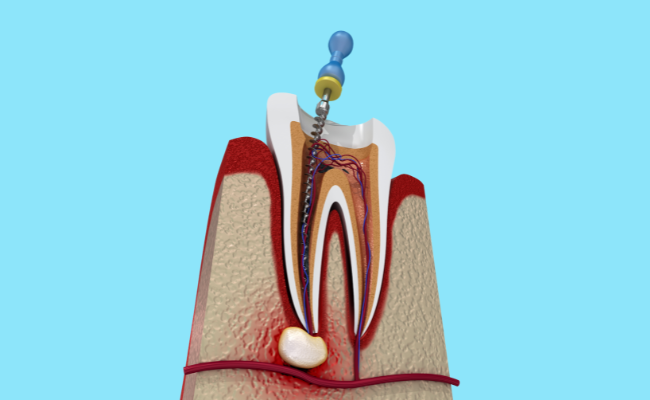How to Treat Root Canal?
- October 28, 2023
- No Comments

What is a Root Canal?
A root canal is a dental procedure specifically crafted to address damage or infection in a tooth. The term "root canal" denotes the natural hollow space at the center of the tooth, housing dental pulp comprising the nerve, blood vessels, and connective tissues. When this pulp undergoes damage or infection due to factors like decay or injury, a root canal becomes imperative to salvage the tooth.
This intervention focuses on relieving pain associated with infected or abscessed teeth by extracting the inflamed pulp, meticulously cleaning and disinfecting the tooth's internal surfaces. Finally, a skillfully placed filling ensures the thorough sealing of the treated space.
Why is a Root Canal Necessary?
The primary reason for a root canal is to address infections or damage that affect the dental pulp. When a tooth is cracked, has a deep cavity, or has undergone trauma, bacteria can enter the pulp, leading to an infection. If left untreated, this infection can spread, causing severe pain and swelling. In some cases, a dental abscess may form, posing a risk of further complications.
A root canal is essential to remove the infected or damaged pulp, preventing the spread of infection and preserving the tooth. It is a proactive measure to avoid tooth extraction and maintain oral health.
How is a Root Canal Performed?
A root canal procedure typically involves several steps:
- Diagnosis: The dentist examines the tooth and takes X-rays to determine the extent of the damage or infection.
- Anesthesia: Local anesthesia is administered to ensure the patient is comfortable and pain-free during the procedure.
- Access Opening: The dentist creates an opening in the tooth's crown to access the pulp chamber and root canals.
- Cleaning and Shaping: The infected or damaged pulp is removed, and the root canals are cleaned and shaped to prepare them for filling.
- Filling: The cleaned root canals are filled with a biocompatible material, often a rubber-like substance called gutta-percha, to seal the space and prevent further infection.
- Sealing the Access Opening: The access opening created in the tooth's crown is sealed with a temporary or permanent filling.
In some cases, a dental crown may be recommended to provide additional support and protection to the treated tooth.
Treatment Solutions for Root Canal:
Several factors influence the choice of treatment solutions for root canals, including the severity of the infection, the tooth's location, and the patient's overall oral health. The primary treatment solution is the root canal procedure itself, but additional considerations may include:
- Antibiotics: In cases of severe infection, the dentist may prescribe antibiotics to eliminate bacteria and prevent the spread of infection.
- Pain Management: Over-the-counter or prescription pain medication may be recommended to manage discomfort during the recovery period.
- Dental Crowns: For teeth that have undergone a root canal, a dental crown may be placed to provide strength and protection, especially for molars and premolars.
- Follow-up Care: Regular follow-up appointments with the dentist are crucial to monitor the tooth's healing and address any concerns promptly.
Benefits of Root Canal Treatment:
- Pain Relief: The primary benefit of a root canal is the alleviation of pain caused by tooth infections. By removing the infected pulp, the source of pain is eliminated.
- Preservation of Natural Tooth: Unlike tooth extraction, a root canal allows the preservation of the natural tooth structure. This is important for maintaining proper oral function and preventing adjacent teeth from shifting.
- Prevention of Infection Spread: Root canal treatment prevents the spread of infection to surrounding tissues, reducing the risk of more severe oral health issues.
- Improved Oral Health: By addressing the root cause of the problem and eliminating infection, a root canal contributes to overall oral health and hygiene.
- Efficient Chewing and Biting: With the natural tooth structure preserved, patients can continue to chew and bite efficiently, ensuring proper digestion.
Comments (0)